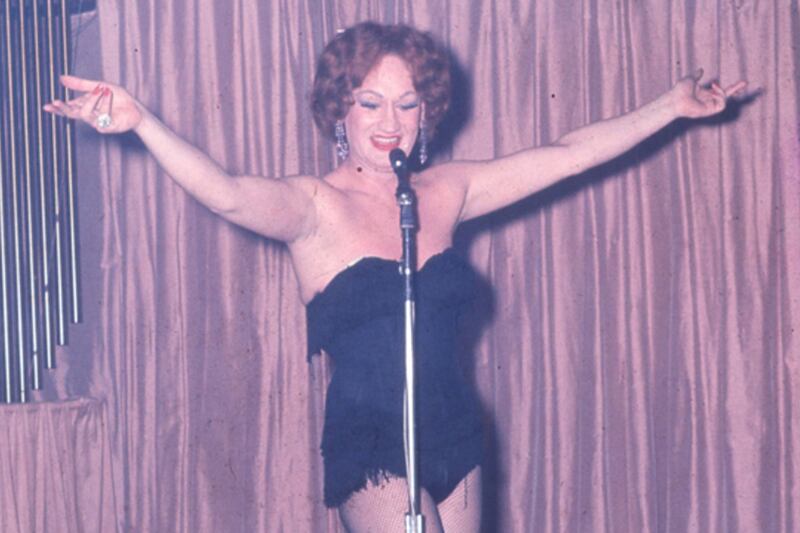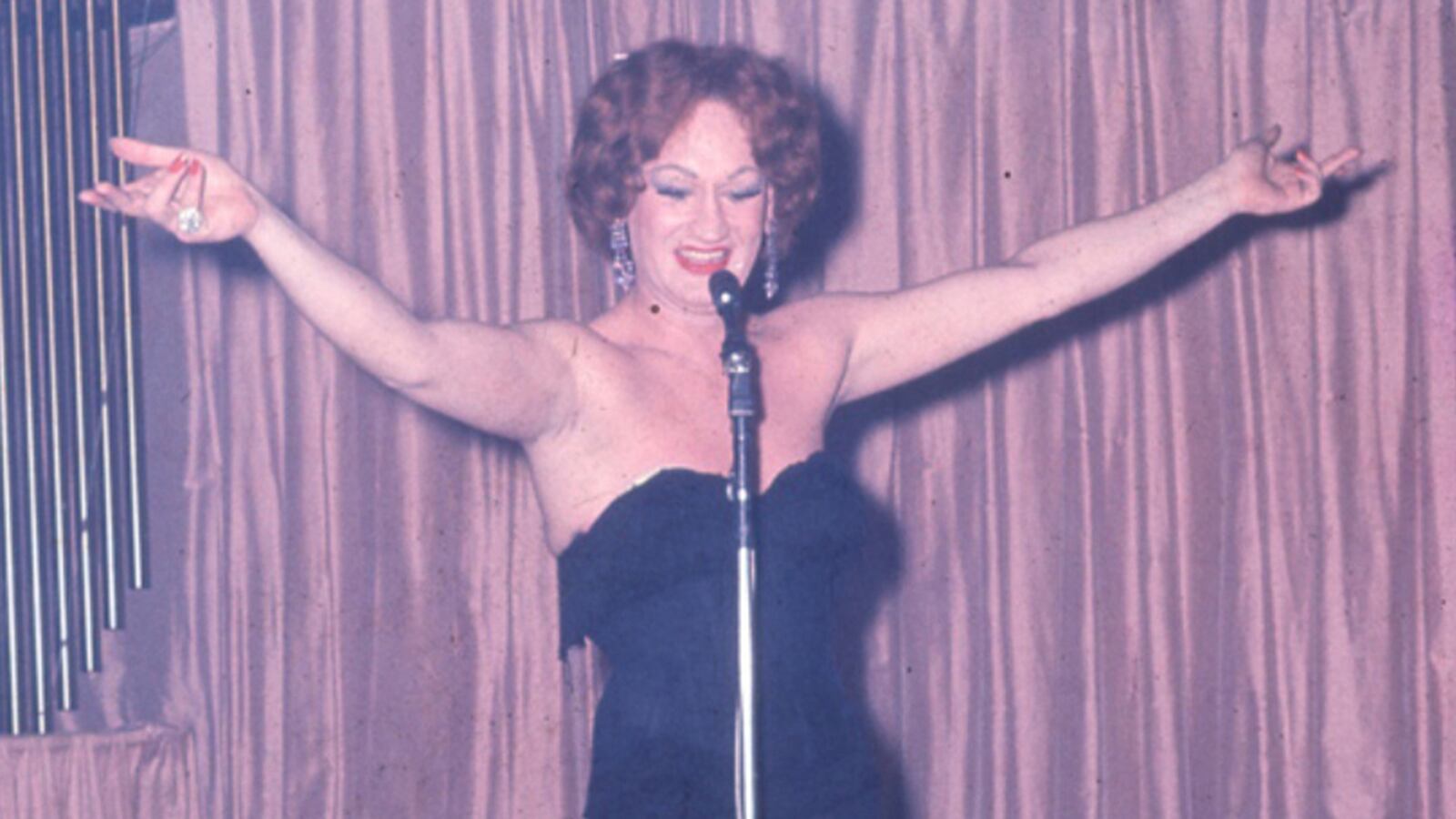
In the 1950s and 1960s, nightclubs like The Jewel Box and The Colony in Kansas City served as mainstays for the city's underground drag ball culture featuring some of the nation's biggest performers on the scene, including Skip Arnold and G.G. Allen. Men (both local and professionals) would dress in elaborate costumes and full make-up and perform on stage.
But it wasn't until 2008 that Michael Boles discovered a box of loose slides left behind in a house his friend was moving into "that was just down the street from all the [drag] clubs back then," he told The Daily Beast. Boles immediately got a projector, sifted through the images, and discovered certain standouts—they featured people with "giant hair against a mosaic wall."
"I called [my friend] Robert Heishman," Boles said, "and he mentioned he had a similar collection. I kind of thought he was messing with me until after a while we realized that [the photos] matched up and even some of the slides [were from] the same party. He found his two years earlier in a scrapyard in the West Bottoms, which is a part of Kansas City. It was a crazy coincidence."
Now Boles and Heishman, along with Emily Henson, have banded together to launch Private Birthday Party, a less-than three-week-old website that serves as a public domain for the discovered collection of photographs depicting Kansas City's drag ball culture in the fifties and sixties. With the help of Stuart Hinds of GLAMA (the Gay and Lesbian Archive of Mid-America) at the University of Missouri-Kansas City—a "scholar as far as Kansas City's gay history goes"—Boles and Heishman have recovered over two hundred vintage images.
Photos: Kansas City's 60's Drag Scene

"A lot of the photos were taken at a club called The Colony," Boles explained. "On Saturday afternoons, they would have 'tea parties,' which was just a dance party. But since same-sex dancing was illegal during the time, they'd try to keep it anonymous. That's where our name, Private Birthday Party, came from—they used to put that on the door. We heard occasionally the police would come in and harass everyone. People would lose their jobs over it."
The Jewel Box, which closed in 1973 and has since been replaced by apartment buildings, was one of the top venues for "femme mimic" performances. "The mafia owned the main club back then called The Jewel Box, which we have a couple photos from," Boles said. "The whole [drag ball culture] on Troost Avenue started from the early forties and ended in the late sixties. It was nationwide, but Kansas City was known to be very open to things like this and was definitely a hot spot back in the day." Although New Orleans, Chicago, New York City, and San Francisco were also popular cities for drag culture, Boles and Heishman discovered during their research that many of the performers spent most of the two decades in Kansas City.
Although Kansas City has a long history of drag—"it even dates back to the late 1800s," Boles said—many details of the photographs, the subjects, and the rich history of the city's underground scene are still subject to investigation. In the late sixties, although the scene on Troost began to fade out, drag culture remained a seemingly steady part of the city's culture. Since many of the parties were underground, thereby, people were attending in secret, Boles and Heishman have found it difficult to identify the photographs subjects. "We've identified about twelve people so far, and we've gotten a hold of one of the people we have a photo of," he explained. "As far as the old performers go, we haven't [identified them], but we have a couple of leads." The trio are also working to identify the photographer behind the images, a man who at this point is seemingly anonymous. The two call him "Jack," since the box Heishman uncovered was labeled "Jack's Slides: Chicago and Kansas City."
Yet, all anonymity aside, Boles, Heishman, and Henson hope that Private Birthday Party will "[highlight] these performers... [as well as] party scenes, outtakes, and portraits of attendees." The images are "a rare and important look into mid-century drag ball culture," they explain. The performances that shook Kansas City's underground culture decades ago still continues to fascinate onlookers today.






